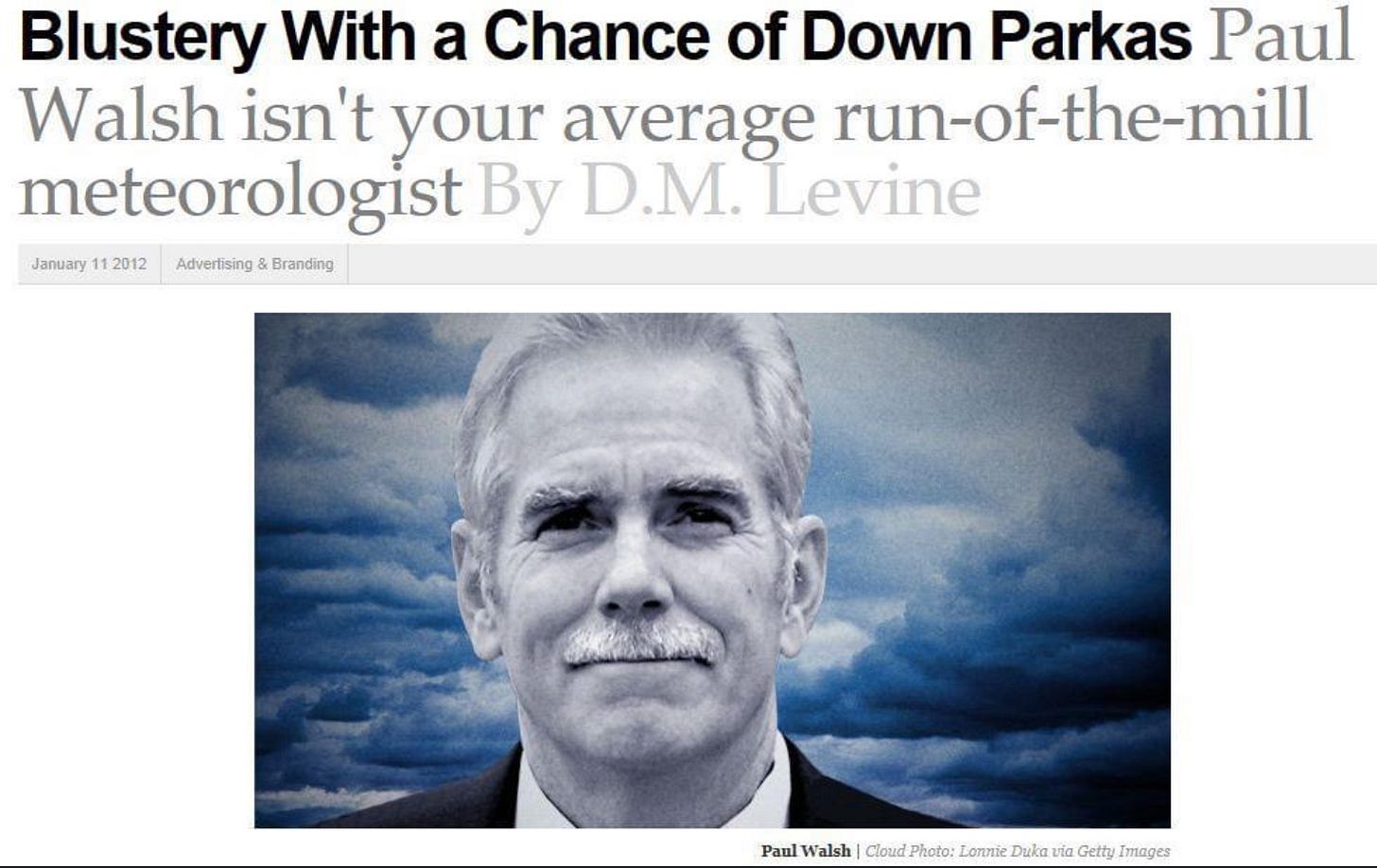When The Weather Company Starts Taking Notes
How the leaders in weather data are validating the need for weather strategy
“Companies need weather to be part of their overall strategy. It’s getting less and less acceptable to use weather as an excuse for poor performance.” Sheri Bachstein, President, The Weather Company
In 2011, I was hired by the (then) Weather Channel Company to create something new: an analytics business that would turn weather from background noise into actionable intelligence for consumer businesses.
The strategy I outlined spanned the full spectrum — from supply chain management to demand forecasting, merchandising, and advertising.
In practice, our initial focus zeroed in on the advertising business, leading to the creation of WeatherFX, an ad tech product that matched real-time weather with targeted media.
The product was featured in this Wall Street Journal article:
Weather Channel Now Also Forecasts What You'll Buy: Company's Data Helps Fine-Tune When and Where Advertisers Should Place Spots
That effort became the foundation, but much of the broader strategy took a back seat until …



